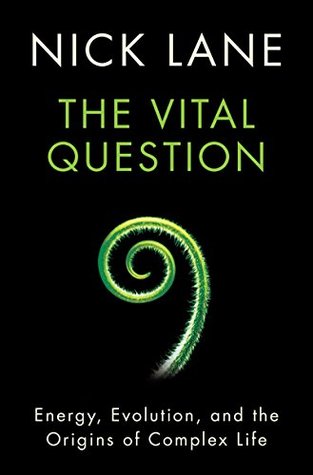More on this book
Community
Kindle Notes & Highlights
Ribosomes are orders of magnitude smaller still. You have 13 million of them in a single cell from your liver. But ribosomes are not only incomprehensibly small; on the scale of atoms, they are massive, sophisticated superstructures.
Ribosomes have an error rate of about one letter in 10,000, far lower than the defect rate in our own high-quality manufacturing processes. And they operate at a rate of about 10 amino acids per second, building whole proteins with chains comprising hundreds of amino acids in less than a minute.
the acquisition of mitochondria and the origin of complex life was one and the same event.
Essentially all living cells power themselves through the flow of protons (positively charged hydrogen atoms), in what amounts to a kind of electricity – proticity – with protons in place of electrons. The energy we gain from burning food in respiration is used to pump protons across a membrane, forming a reservoir on one side of the membrane. The flow of protons back from this reservoir can be used to power work in the same way as a turbine in a hydroelectric dam.
proton power is as much an integral part of all life as the universal genetic code. Yet we know next to nothing about how or why this counterintuitive mechanism of energy harnessing first evolved.
Onions, wheat and amoebae have more genes and more DNA than we do.
some salamander genomes being 40 times larger than our own, and some frogs being less than a third of our size.
Over hundreds of millions of years, complexity gradually increased, as cells learned not only to deal with oxygen, but also to profit from its reactivity: they evolved aerobic respiration, giving them far more power.
eukaryotes all share a common ancestor, which by definition arose just once in the 4 billion years of life on earth.


